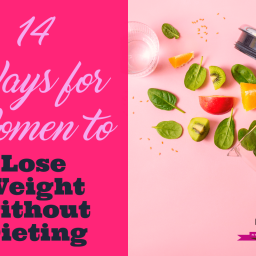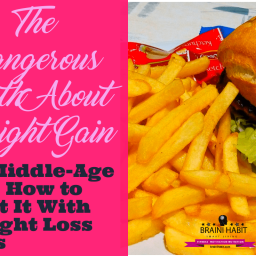Every year type 2 diabetes and its complications are in the list of top causes of death worldwide.
This might sound scary for everyone diagnosed with the disease, however, it should be rather perceived as motivation.
With the proper lifestyle and dietary changes, evidence suggests that type 2 diabetes can be reversed.

- Weight management through diet is key
- Choose a diet for both weight loss and optimal health
- Control your portions to control your diabetes
- Counting carbohydrates and reading labels
- Consume more fiber to keep low blood sugar levels
- Do not always trust the glycemic index of foods.
- Some fats should be entirely avoided
- Monitoring of blood sugar response
- Consider a consult with a dietitian
- Be more physically active
- The bottom line on diet tips for women with type 2 diabetes
Weight management through diet is key
There are many roots leading to the development of type 2 diabetes. Some of the risk factors are family history for it and lack of exercise.
However, the main cause for type 2 diabetes is obesity and especially certain body types with a specific fat distribution.
The high prevalence of obesity worldwide is one of the reasons for the high incidence of the disease amongst the population
Separate studies in the UK and Australia found that roughly 86% of all patients with type 2 diabetes are overweight or obese (1, 2).
Of course, it is also evident from the studies that 14% of people with type 2 diabetes had normal weight.
However, much more important measurement is not the weight but the amount of body fat and waist circumference.
The reason is that there are cases of hidden obesity. It is when the person has a high level of fat but low levels of muscle mass.
He or she might be average in appearance and weight measurements, but with actual fat levels above the healthy limits.
If it is coupled with a sedentary lifestyle and genetic predisposition, this severely raises the risk for type 2 diabetes.
Especially dangerous is the accumulation of fat around the abdomen (3).
This type of fat has different metabolic activity than the rest – it releases pro-inflammatory molecules, free fatty acids and other metabolites that disturb the normal function of insulin.
As a result, the progressive insulin resistance of the organism leads to the development of diabetes.
However, it is impossible to lose fat only from the areas we choose. The body has its own preferences about which fat stores to target first.
This doesn’t mean that even small amounts of weight loss are not beneficial.
As little as 5% weight loss leads to great improvement in insulin sensitivity and reduces the risk for complications (4).
What is even more inspiring to change your dietary habits is that 86% of those who lost more than 15kg reached remission (5).
They had type 2 diabetes reversed and did not need to take medication anymore.
This is why proper nutrition, which allows weight management and fat loss, is the key factor in dealing with diabetes (6).
Take-Away:
Weight-loss is the first and most important dietary advice given to patients with recently discovered type 2 diabetes.
Choose a diet for both weight loss and optimal health
One of the ways to lose weight is by following a specific diet.
It is important to note that any diet can work for weight loss as long as it involves a restriction of energy intake.
Studies show that the size of the caloric deficit is the only condition that determines how much weight we are going to lose (7).
There are generally two opinions in the medical community about the most suitable diet for weight-loss in diabetic patients.
On one side we have the low-carbohydrate diet approach, while on the other is the low-fat approach.
The low-carbohydrate diet usually recommended is the ketogenic diet, where we completely restrict carbohydrates and our body starts burning ketones produced from fat instead.
First of all, the diet results in rapid weight loss because we are restricting completely our main energy source – carbohydrates.
Secondly, because of the lack of carbohydrates, the blood glucose levels and insulin levels stay low. This significantly improves the management of diabetes.
A lot of researchers show the benefits of low-carbohydrate diets for diabetics (8).
Others raise concerns because these diets do not restrict saturated fats while the restrictions on carbohydrates are too radical (9).
The diet increases the risk of hypoglycemia (dangerous drops in the blood sugar), especially in patients new to it.
The low-fat diet on the other side has a medium restriction of fats (no more than 30% of total caloric intake) and generally follows the principles of healthy nutrition.
However, the diet will not lead to such a quick loss of weight unless a specific restriction of the calories is applied.
A study compared the effectiveness of low-fat, low-carb and also the Mediterranean diet for controlling blood sugar and insulin levels in diabetic patients (10).
While the low-carbohydrate diet resulted in better weight management and blood glucose control, compared to low-fat, the best results were achieved with a Mediterranean diet.
The Mediterranean diet is also very beneficial for general health, as it involves large amounts of fresh fruits, vegetables, cereals, and legumes.
It also involves sufficient amounts of healthy fats from the consumption of fatty-fish and olive oil.
The diet excludes foods with refined sugars as well as saturated fats like red meat and processed meat.
It is also much easier to follow compared to the ketogenic diet which involves large restrictions in terms of dietary choices.
After all, evidence suggests that the most important factor leading to results is to stick with the diet whether low-carbohydrate or low-fat (11).
Take-Away:
While the main target of a diet for managing diabetes is weight loss, it should also remain healthy, balanced, and easy to follow.
Control your portions to control your diabetes
While the Mediterranean diet appears to be the most beneficial it is important to consider that it does not involve any specific restriction of the caloric intake.
This means that if you consume too many calories you won’t lose weight even if it is from healthy sources.
In order to maximize the benefits, you also need to control the size of your meals.
A study investigating the result of patients controlling the size of their portions found out that this method is very effective for weight loss (12).
It resulted in better weight loss and better control over blood glucose and insulin levels.
Even if no specific diet is being followed, a combination of picking healthy food choices and control over the size of the meals seems to provide the most benefits for controlling diabetes.
In order to be more satiating, more green leafy vegetables can be added, as they are quite low in calories but rich in fiber and nutrients.
Take-Away:
Reducing the size of your meal portions can reduce your total caloric intake without stressing you with calorie counting or nutrient restrictions.
Counting carbohydrates and reading labels
Another tip that can help you manage your blood glucose levels is counting the amount of carbohydrates you eat (13).
Because of the insulin resistance, your blood glucose levels might often be elevated.
Those increased levels can lead to detrimental effects in the long term like kidney disease, blindness, nerve damage, atherosclerosis, and slower healing of wounds.
Severe complications include heart attacks, stroke, kidney failure, and amputations.
Counting the amount of carbohydrates and splitting them evenly throughout the day is a great tool to plan your meals and prevent spikes of your blood sugar levels.
In order to count them effectively, you need to know which foods contain carbohydrates and their relative amounts.
These foods are grains, fruits, starchy vegetables (rich in starch like potatoes), dairy products and legumes.
Those are healthy options when used in moderation. They provide vitamins, minerals, and fiber.
There are also highly caloric foods rich in sugar like snack foods, sweets, juices, soft drinks, and energy drinks.
They are considered unhealthy because of the spikes in blood sugar that they cause, thus making it harder to control and treat your diabetes.
Other foods like meat, poultry, fish, seafood, and nuts contain no carbohydrates or only neglectable amounts.
They also need to be consumed in moderation because some are quite caloric.
Foods that you can eat in abundance are the non-starchy, green and leafy vegetables.
While rich in vitamins and fiber, they have very low amounts of carbohydrates and calories.
You can easily find out how much carbohydrates are contained in foods by reading the labels properly if they have packages.
Pay attention to the amount of the serving size and the total size of the package, as well as if the amount of carbohydrates listed.
It can be for one serving or per 100g of product.
Labels can also help you pick foods that are higher in fiber as well as avoid foods that are high in saturated fats or contain hydrogenated fats.
Take-Away:
While it can be important to count and balance your carbohydrate intake throughout the day, it is even more important to read carefully and correctly most food labels.
Consume more fiber to keep low blood sugar levels
As we mentioned, healthier carbohydrate sources usually contain fiber.
Fiber is a type of carbohydrate that cannot be digested. Thus it doesn’t result in the release of glucose or raising blood sugar.
Because of its properties, it aids digestion, improves satiation, slows down the absorption of other carbohydrates and keeps blood glucose in check.
There are two main types of fiber – soluble and non-soluble.
Soluble type of dietary fiber is the one improving glycemic control (blood sugar) and lipid profiles (lowers blood cholesterol) (14).
Best sources of soluble fiber are oats, beans, peas, lentils, apples, citrus, berries, chia, etc.
Consuming more non-soluble fiber is also important because it aids digestion, prevents constipation and protects against one of the most common types of cancer – colorectal cancer (15).
Insoluble fiber is contained in whole grains, legumes, carrots, cucumbers, tomatoes, green leafy vegetables, and others.
As you can see, most fresh fruits and vegetables are good sources of either or both types.
This is why it is important to eat enough of them in general. The recommended daily amount is at least 400g.
Fruits and vegetables also reduce the risk of cardiovascular diseases. (16).
Take-Away:
Fiber will not only help you to stay satiated and lose weight, but also improves glycemic control, lipid profile, and digestion.
Do not always trust the glycemic index of foods.
Some foods that lead to spikes in the blood sugar should be avoided.
In cases of disturbed metabolisms, such as in insulin resistance and diabetes, this can lead to a significant and prolonged elevation of the blood glucose levels.
While it is easier to simply divide the foods in categories whether they spike glucose or not, there are also indexes to determine how much exactly they will affect blood sugar.
Such is the glycemic index of foods. It compares how different foods impact blood sugar levels in comparison to pure glucose, which is accepted as a value of 100.
The glycemic index of most foods was derived from the testing of healthy subjects.
Science has collected data for 2500 different food items (17).
Bigger the value, higher the raise of blood glucose. Generally, a glycemic index below 55 is considered low, while above 70 is high.
Glycemic index, however, has severe limitations – it is determined for a fixed amount of grams of carbohydrates for each food (18).
A large amount of food with a low glycemic index may increase your blood sugar as much as a small amount of food with a high glycemic index.
In order to take into account the size of the portion consumed, it is better to use glycemic load instead of the glycemic index.
Foods that have medium to high glycemic index might actually have a moderate to low glycemic load when consumed in normal portions, like white bread for example.
Respectively, foods with a moderate glycemic index will result in high glycemic load when eaten in normal amounts, like chocolate bars.
The index varies also depending on how much the product is cooked or processed.
The glycemic index is further affected by mixing different foods.
Adding healthy fat or fiber to the meal will decrease it as they slow the digestion of carbohydrates.
While it is better for your blood sugar levels to mix various food sources in a meal, this won’t make sugary and highly caloric food any healthier.
Take-Away:
The glycemic index can be handy to get a general idea of how different foods might affect your blood glucose levels, but there are severe limitations to its usefulness.
Some fats should be entirely avoided
Fats can be helpful in maintaining lower blood sugar levels.
Fats can slow down the digestion and absorption of carbohydrates, so it is a good idea to mix different foods on your plate.
However, fats are quite caloric and not all of them are healthy.
There are 4 common groups of fats in our diet – saturated, monounsaturated, polyunsaturated and hydrogenated(trans) fats.
Mono and polyunsaturated fatty acids, when used in moderation, are very beneficial for metabolic and cardiovascular health, for example by lowering blood cholesterol.
Good sources are olive oil, avocado, fatty fish and seafood.
Saturated fats according to most studies increase cardiovascular risk (19).
Evidence is rather mixed so they should be restricted to around 10% of your total daily energy intake.
And while the information for saturated fats is diverse, the data for the detrimental effect of hydrogenated fats is compelling (20).
Those fats are usually produced artificially, from the hydrogenation of plant oils.
The goal is to create an oil with a solid structure like butter, however without the cholesterol content typical for all animal products.
The result, as the studies showed, was quite different.
Artificial trans fats promote inflammation and severely increase the risk of cardiovascular diseases, diabetes, and cancer.
This is why all products containing hydrogenated oils should be entirely avoided.
Take-Away:
Although healthy fats can be beneficial, some types like hydrogenated trans fats have to be completely excluded from any diet.
Monitoring of blood sugar response
Everybody responds differently to foods.
There are general values and principles on how foods affect us, which we already mentioned, but we also have to consider some variations amongst individuals.
One of the ways to determine what works best for you in terms of blood glucose levels is to regularly measure them.
This is usually done with portable medical devices called glucometers.
They measure the amount of blood sugar by reading a disposable test strip with a drop of blood from your finger.
They can be very accurate and provide an opportunity for self-monitoring anywhere including in your home.
According to multiple studies, self-monitoring has significant benefits on blood sugar control (21, 22).
It improves the management of diabetes both in the short and long term.
Take-Away:
Self-monitoring of blood glucose levels is beneficial for both short and long term management of diabetes.
Consider a consult with a dietitian
While your physician and endocrinologist can give you helpful advice and guide you through your treatment, every patient with recently discovered type 2 diabetes should consider a consultation with a dietitian.
A dietician is a professional who is specifically trained to provide the most optimal and individualized approach in regards to your nutrition.
He or she will not simply provide you with a diet to follow, but aid you in changing your nutritional habits into healthier ones.
A specialist can point out any unhealthy behavior in regards to food and provide support and motivation through your journey of fat loss and blood sugar management.
Make sure that you are seeking a dietician with medical education and not a self-proclaimed nutritionist using alternative methods to treat medical conditions.
Take-Away:
A dietician might be the specialist you need to reach optimal results in your treatment of type 2 diabetes.
Be more physically active
While this is not a piece of dietary advice in particular, it can significantly boost your insulin sensitivity and help you manage your diabetes and blood sugar.
Your skeletal muscles will uptake more glucose and you will boost their sensitivity to insulin (23).
This will result in reducing your overall insulin resistance.
Exercise also positively affects the lipid profile, blood pressure, cardiovascular events, mortality, and quality of life.
Exercise will also help you lose fat in a faster, healthier way.
The most important factor that will determine what type of physical activity you should pick is adherence.
The best exercise is the one which you enjoy so that you can stick with for a long period of time.
Just like with the diet, consistency is the key to exercise as well, in order to maximize the health benefits.
Take-Away:
Regular exercise will help you reduce insulin resistance, manage blood glucose, lose weight easier and generally be healthier.
The bottom line on diet tips for women with type 2 diabetes
Type 2 diabetes is a serious condition, requiring the collaboration of different specialists in order to provide optimal care for the patient.
However, the main goals are maintaining optimal weight, losing excess fat especially from the abdomen and changing dietary habits so that the patient can make the right choices for their health.
Losing the excess fat especially in cases of recently discovered diabetes is supported by evidence to lead to remission of the disease and eliminate the need for medications.





